| Joseph PRIESTLEY, The History and Present State of Electricity. With Original Experiments. Vol.I. The Discoveries of Mr. Grey (Gray).
The Experiments and Discoveries of Mr. Stephen Grey, which were made prior to those of Monsieur du Fay, and which bring the History of Electricity to the Year 1733.
1) Find out the origin of the word "electricity" from the Greek.
Use this presentation of William Gilbert to explain this origin:

2) Read the definition of the "electrical fluid" in Diderot's Encyclopédie (exists on cdrom) : relate to other articles from the Encyclopédie.
3) Describe thee experiments related to differentiate "electric" from "non-electric" substances (See enumeration: hair, silk...)
4) Carrying the "electric effluvia" discover errors in experiments (when crossing the river Thames for instance).
From the following engraving explain the wrong deduction made at the time after this experiment that hemp was a conductor:

5) Find out a website relevant to Gray's experiences.
All the following illustrations are borrowed from this excellent site: try to find out on the internet more about the experience of Mr. Gre(a)y when he suspended a boy on hair lines.
6) Try to understand the influence of "points" in receiving and emitting the electric effluvia. Comment on these two illustrations:
7) Which inference was made by Grey (Gray) from these experiments?
8) In a bibliography would you consider this text as a "primary source" or as a "secondary source"?
Illustrations:
A lecture at the Charterhouse on discoveries in electricity by Stephen Gray. The diagram above the speaker shows the first electric telegraph at Otterden House, Faversham, of July 1729:
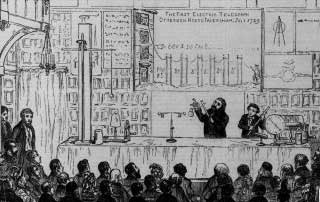
Gray and a friend, Jean
Desaguliers, conducted experiments which showed that objects
such as cork, as far as eight or nine hundred feet away, could be
electrified by connecting them to the glass tube with wires or hempen
string. They found material such as silk would not convey electricity.
They discovered distant objects could not be electrified if the
transmission line made contact with earth. The line for transmission
was suspended by silk threads to prevent contact with the ground.
It was found that metal objects held in the hand and rubbed showed
no signs of electrification. However, when mounted on a non-conductor,
they became electrified. Gray realized that somehow the earth was
responsible for conducting electrical charge away from the body.
After this realization Gray found he could electrify any material
on earth by friction.
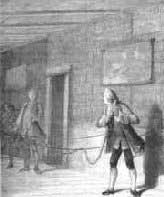
He even went as far as to suspend pupils of the house by cords and electrified them, sometimes even drawing sparks from the human body. The figure shows that the electric force of a rubbed glass could be sent, throught a wire, to the body of a person.
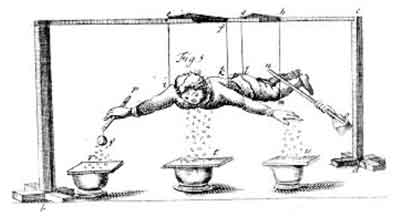
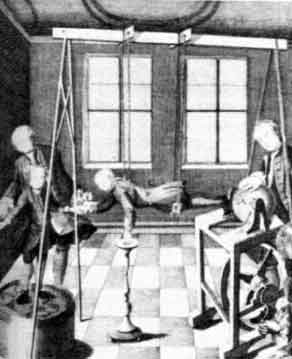
From all these experiments, it became clear that electrification is a surface effect; that the electric "virtue" or "fluid" would move freely along some materials-named, by Desaguliers, "non-electrics" or "conductors" - from one body to another. The earth, the human body, metals, moisture are immediately recognized as conductors. Materials which do not conduct electricity came to be called nonconductors or insulators. A metal rod or sphere when held in the hand and rubbed with fur shows no sign of electrification, but when mounted on a nonconductor, the metal is readily electrified. The electrical charge is no longer conducted away to be shared with the huge object which is the earth. When this was realized, it was found that practically any material can be electrified by friction. Water is found to be a conductor. It renders insulators conducting when the surfaces are wet or moist. This makes understandable the rapid loss of charge by electrified bodies on humid days.
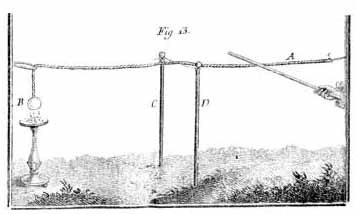
So Gray is credited with finding that electrical conductors must be insulated and that insulators were not conductors and that a charge could be induced in a previously non-electrified body. He established electricity as a current showing it would travel over a conductor. Gray found water to be a conductor which rendered insulators into conductors when their surfaces were wetted. This concept helps us to understand the rapid loss of charges on humid days by electrified bodies. He sent many of his papers to the Royal Society and was elected a fellow. Gray's most important work, published in 1732, announced the discovery of electrical induction and the distinction between conductors and insulators.
Gray hypothesized that electricity flows everywhere, and he paved the way for more than a generation of "electricians" - wandering scientists who made their living by demonstrating the electric current using Leyden jars. Electricians typically killed birds and other small animals with electric shock and passed electric current across rivers and lakes.
He was awarded the Copley Medal in 1731 (the first award) and again in 1732 for his research on electricity. In his later years Gray was frequently resident with John Godfrey, Esq., (who had also been, note, a patron of John Harris) of Norton Court, Kent, and with the Rev. Granville Wheler, a prosperous cleric, both of whom aided his experiments in electricity and gave him financial support. He continued his research until upon his death bed 15th February 1736) where he tried to describe to his doctor the work he still needed to complete.
9) Here is Ramsden's electrical machine. Find out more about the history of electricity on the site of the Museum of Science in London
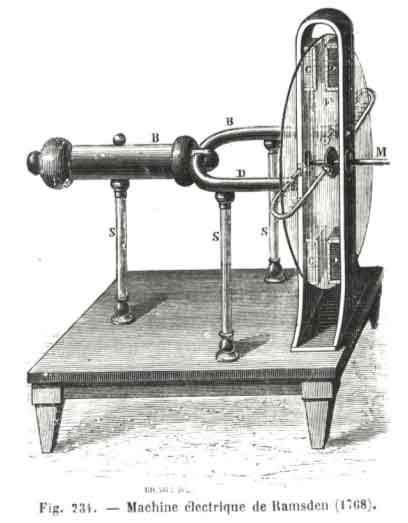
10) Find out more about the storage of electricity (The Leyde Bottle) and Volta's experiences.
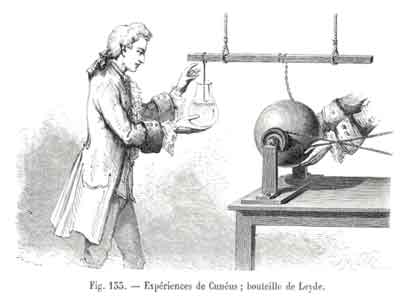
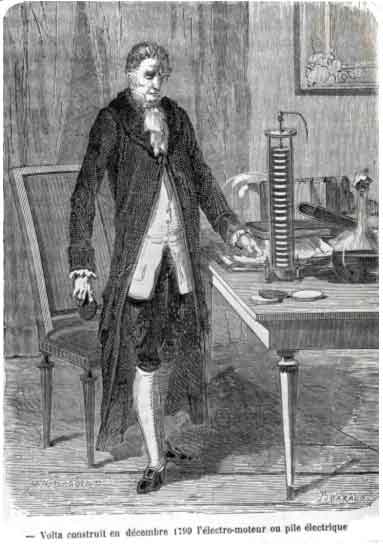
11) Where does the expression "to be galvanised" come from? Who was Galvani?
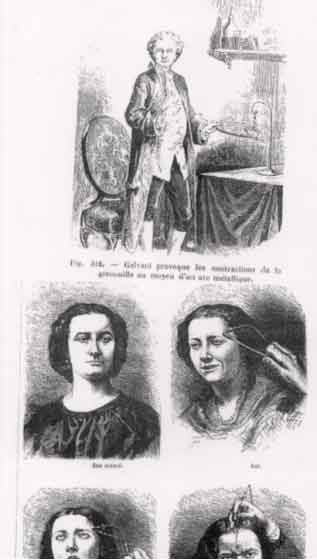
12) The experiments to galvanise corpses:
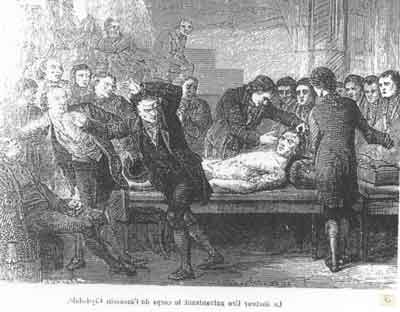
13) What is Mesmer's bucket? What is "to be mesmerised"?

|



